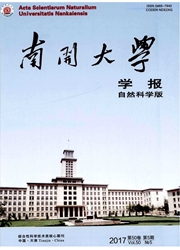

 中文摘要:
中文摘要:
为了解儿童多环芳烃(PAHs)的暴露特征和健康风险,选取36名9~12岁的天津小学生作为研究对象,于2010年11~12月采集其个体暴露和室内环境PM2.5样品,分析了样品中载带的PAHs浓度,得到儿童PAHs个体暴露特征,然后应用比值法和因子分析法对儿童个体暴露的PM2.5中PAHs进行源解析,最后应用增量终生致癌风险对儿童PAHs暴露进行健康风险评价.结果显示,儿童PAHs个体和室内的暴露浓度分别为(90±34)ng/m3和(79.0±41)ng/m3,芳烃环数集中在4~6环;PM2.5中PAHs儿童个体暴露最主要来源为燃煤,其次是机动车尾气、室内烹调、吸烟及卫生球挥发等;天津儿童对PM2.5中PAHs的呼吸暴露存在较大潜在健康风险.
 英文摘要:
英文摘要:
36 Pupils between 9 and 12 years old were selected as objectives for the study on children exposure to carcinogenic PAHs.Personal exposed and indoor filter samples of PM2.5were collected from November to December in 2010,and both PM2.5 and PAHs concentration levels were determined.The concentrations of the PAHs in PM2.5 were(90±35)ng/m3 for personal exposure and(79±41)ng/m3 for indoor ambient.Among the detected 16 individual PAHs,4-6 ring PAHs were the dominant components.The special PAHs ratios and the result from factorialanalysis showed that coal combustion was the most important source for PAHs during the sampling time,while transportation,cooking,smoking,and volatilization of camphor ball were the subordinate sources.Based on the method of incremental lifetime cancer risks of PAHs,it was also found that the children’s exposure to PAHs in PM2.5 in Tianjin was above the acceptable risk level with the median value of 4.4×10-5,which means they were in a big potential risk.
 同期刊论文项目
同期刊论文项目
 同项目期刊论文
同项目期刊论文
 期刊信息
期刊信息
